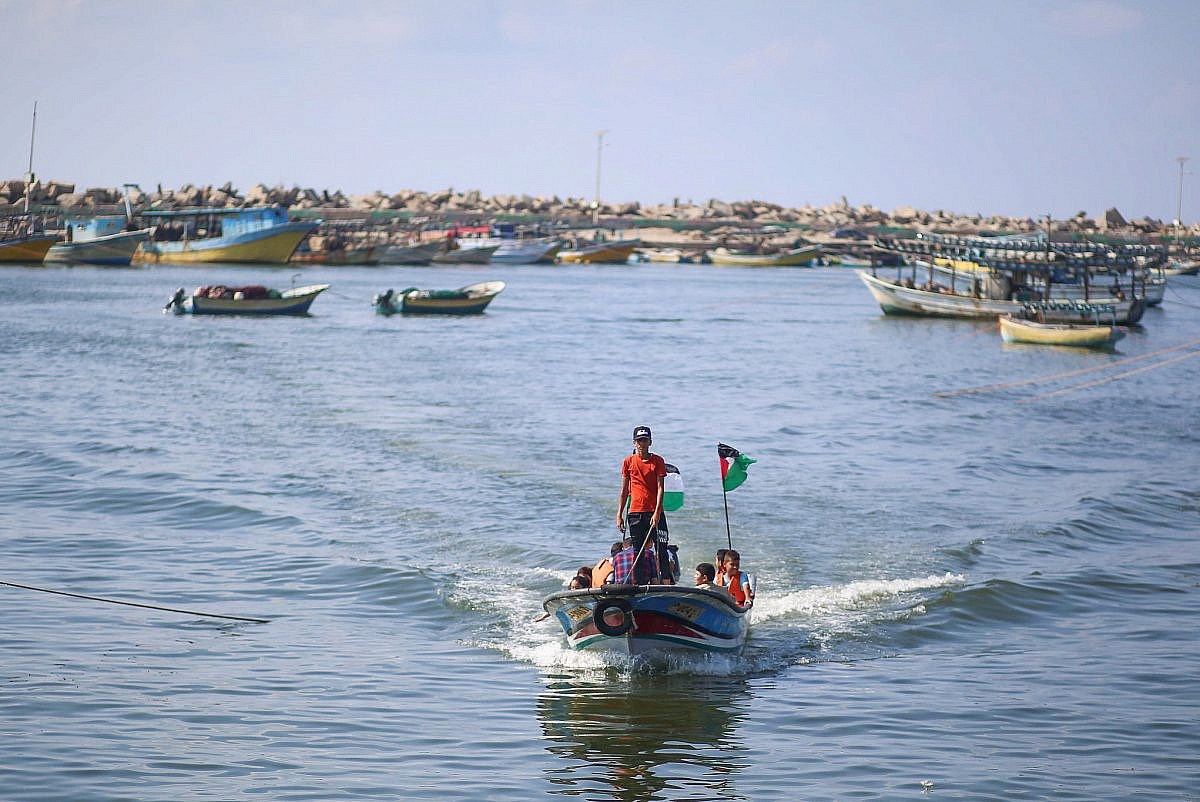When Huwaida Arraf helped organize the first “Free Gaza” sea voyage from Cyprus in 2008, she knew the effort was mostly symbolic. It had been two years since Israel began imposing restrictions that would eventually transform into a near-total siege of the Strip, forbidding all inbound maritime traffic and banning fishing beyond a maximum of six nautical miles. The blockade severely limited a key source of food and livelihood for many Palestinian residents, but the aim of the Free Gaza journey — which carried just a single box of hearing aids for a charity working with deaf children — was not to deliver aid.
“We had two fishing boats that barely got us across the Mediterranean,” Arraf, a human rights attorney and activist, told +972. “The real goal was to confront and challenge Israel’s illegal blockade itself.”
Now, five months into Israel’s devastating war on Gaza, Arraf is working with the Freedom Flotilla Coalition to organize a new voyage. The new flotilla, which has not yet announced a departure date, will certainly carry aid, but its long-term mission, Arraf explained, is about “challenging policies of control.”
Those policies, say critics, are at the heart of a new “maritime corridor” for Gaza, including an offshore port, announced by the United States, European Union, and United Kingdom. Although the project is being touted as a means of speedily delivering humanitarian aid to the besieged Strip, it essentially leaves Gaza’s Palestinians at the mercy of the same governments aiding and abetting Israel’s assault on the enclave.
It also reveals the impotence of Israel’s backers. After all, the bloodbath they continue to bankroll is measured not just in mangled Palestinian bodies and ravaged landscapes, but by a deliberate starvation campaign that is happening on their watch — one that, even American officials admit, cannot be undone with stopgap measures. At the same time, as hundreds of thousands of Palestinians grapple with hunger, the proposed maritime corridor may be their only chance at near-term survival.
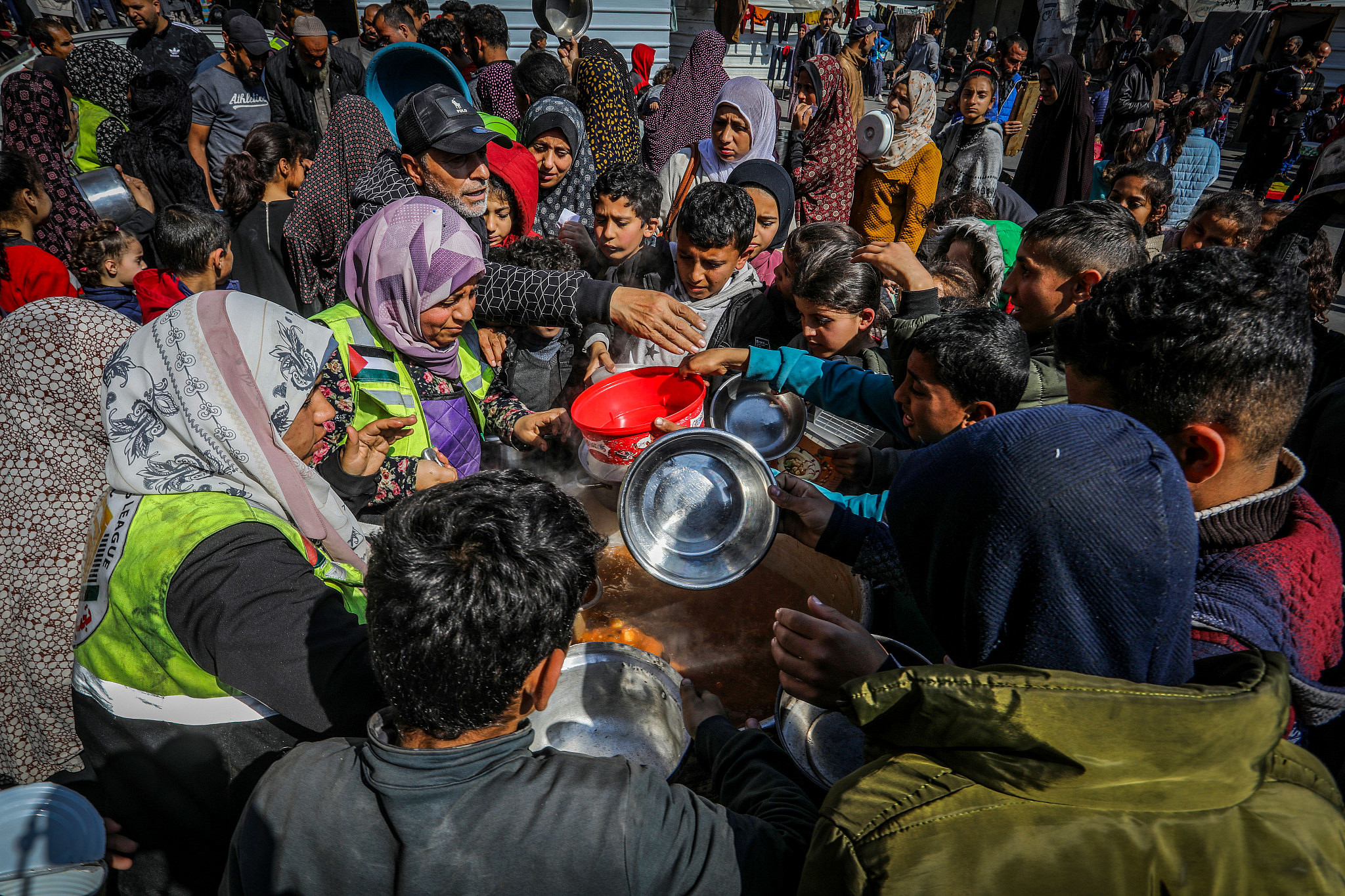
“The children who have already starved to death in Gaza had survived countless bombings and displacements before dying in anguish,” said Yara M. Asi, an assistant professor of global health at the University of Central Florida and author of “How War Kills.” “No one wants to see another child die of hunger.”
At the same time, Asi cautions that the level of desperation in Gaza means that Palestinians will have to make heart-wrenching choices about who receives aid first. “How do you prioritize between elderly mothers, children, and otherwise healthy adults?” she told +972. “It’s an impossible choice for families.”
It’s also one that’s been “foretold for months,” Asi adds. In December, the United Nations Relief and Works Agency (UNRWA) warned that insufficient aid put 40 percent of Gaza’s population “at risk of famine.” Three months on, the World Food Programme estimates that Gaza’s entire population of 2.2 million people is “in ‘crisis’ or worse levels of acute food insecurity.”
Despite the urgency, though, sources involved in planning the maritime corridor, who requested anonymity, told +972 that key details of its execution remain unresolved — including, crucially, how aid will be distributed once it arrives in Gaza. In particular, the lack of coordination with UNRWA which has been the target of an Israeli-led defamation and defunding campaign over the past two months, is almost sure to hobble the international effort, raising serious questions about its intent.
‘Glaring distraction’
A lot of the uncertainty around the maritime corridor revolves around the last part of what one source called a “three-phased approach.”
The first phase is being spearheaded by the Spanish charity Open Arms and its partner World Central Kitchen (WCK), which maintains dozens of food preparation sites in Gaza. On Friday, a ship tied to Open Arms arrived off the coast of Gaza from Cyprus, carrying some 200 tonnes of food donations secured by the charity and WCK.
Today @WCKitchen is reaching 37 million meals in Gaza. On the same day that we hoped to finish our Jetty and download 200 tones on a pilot test before bad weather. So far 2 crates already delivered from the @openarms_fund barge.????But still more to do next few ours…#FeedTheNorth pic.twitter.com/3ECfsKalbR
— José Andrés ???????????????????????? (@chefjoseandres) March 15, 2024
The organizers, the source said, had contracted Palestinian workers to build a “floating jetty” for receiving the shipments, an effort that was “closely coordinated with the government of Israel.” WCK posted a video on X showing the aid being offloaded — though, as of this writing, it was unclear how the aid was being distributed. Meanwhile, the charity says a second ship is being readied to sail from Cyprus.
The second and third phases would see the U.S. military constructing a causeway off the coast of Gaza and overseeing the transfer of enough aid to prepare 2 million meals per day, according to the White House. But even if the sea shipments were to make it ashore as planned, the Pentagon estimates it will take two months to get them there — too long for Gaza’s starving population to wait, aid experts warn. An estimated 300,000 people face an imminent famine in Gaza’s north and, according to the UN, hunger has reached “catastrophic levels” throughout the Strip.
In the meantime, aid agencies are already criticizing the maritime plan for failing to address the fundamental cause of Gaza’s hunger crisis. Doctors Without Borders (MSF) warned that U.S. plans for the causeway are a “glaring distraction” from Israel’s continued refusal to facilitate more aid shipments into the enclave, especially as it continues an assault that has so far killed more than 31,000 people.
Similar criticisms have been leveled at U.S.-led food airdrops, which deliver only a small fraction of the aid needed in Gaza’s north and, in any case, cannot ensure safe distribution. On Mar. 8, for example, five people were killed and 10 injured by falling aid packages when the parachutes to which they were attached failed to open.
Over the last five months, according to the UN, aid shipments into Gaza have been stalled at a maximum of 150 trucks a day on average; more than three times that amount used to enter each day prior to October 7. The mounting food shortages have meant that the flow of trucks has become a progressively smaller fraction of what’s needed — a fact acknowledged by none other than Samantha Power, head of the U.S. Agency for International Development (USAID). Even when food aid has managed to reach the hardest hit areas, Israeli forces have sometimes opened fire on the hungry, as happened during the Feb. 29 “flour massacre,” in which at least 110 Palestinians were killed.
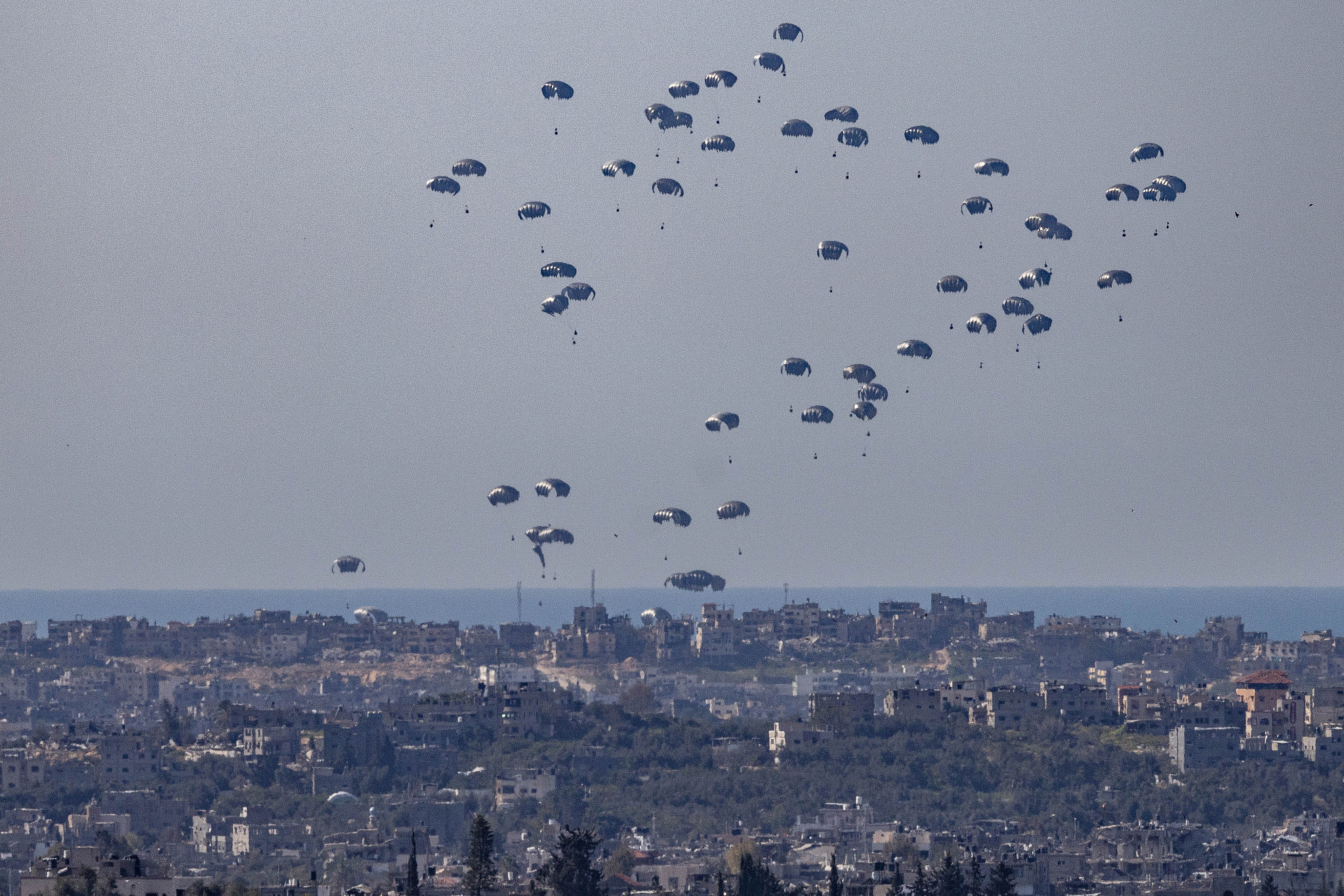
Undermining UNRWA
This spiraling emergency is intricately connected to aggressive efforts to undercut UNRWA, an agency long targeted by Israeli officials. According to UNRWA’s former spokesperson, Chris Gunness, the convoy that led to the flour massacre “was effectively carried out by mercenaries, truck drivers coordinated by the Israeli authorities,” who sought to sidestep the UN agency. These drivers, he said, were not familiar with the area or the logistics of delivering aid in Gaza.
The disastrous Feb. 29 attempt, Gunness argued, showed UNRWA is “the only organization with the experience, the staff and the infrastructure to distribute aid safely and securely” in the enclave — especially in the quantities announced by President Joe Biden last week.
“It’s unthinkable that you could reconstitute a new aid organization like UNRWA to oversee food distribution on that scale,” Gunness told +972. “That’s armchair humanitarianism, from people who’ve never been to Gaza or [don’t] understand the complexities of aid delivery in this highly volatile situation.”
Recognizing UNRWA’s vital role, Canada, the EU, Sweden, and Australia recently resumed funding to the agency after briefly suspending it on unverified Israeli allegations that a dozen out of UNRWA’s 13,000 Gaza-based staff were involved in the Hamas-led October 7 attack on southern Israel. Despite an intelligence assessment that expressed “low confidence” in Israel’s claims, the U.S. has yet to restore its funding, further obscuring the Biden administration’s plans for the seabound aid shipments.
And although experts agree that UNRWA is the only organization with the warehouses, vehicles, and staff to safely store and deliver food supplies at that scale, Juliette Touma, UNRWA’s director of communications, told +972 that the agency is “not involved and has not been approached” about the effort. All the while, Israel’s attacks, which have so far destroyed or damaged 157 of UNRWA’s facilities in Gaza and claimed the lives of 165 of the agency’s staff, continue unabated.
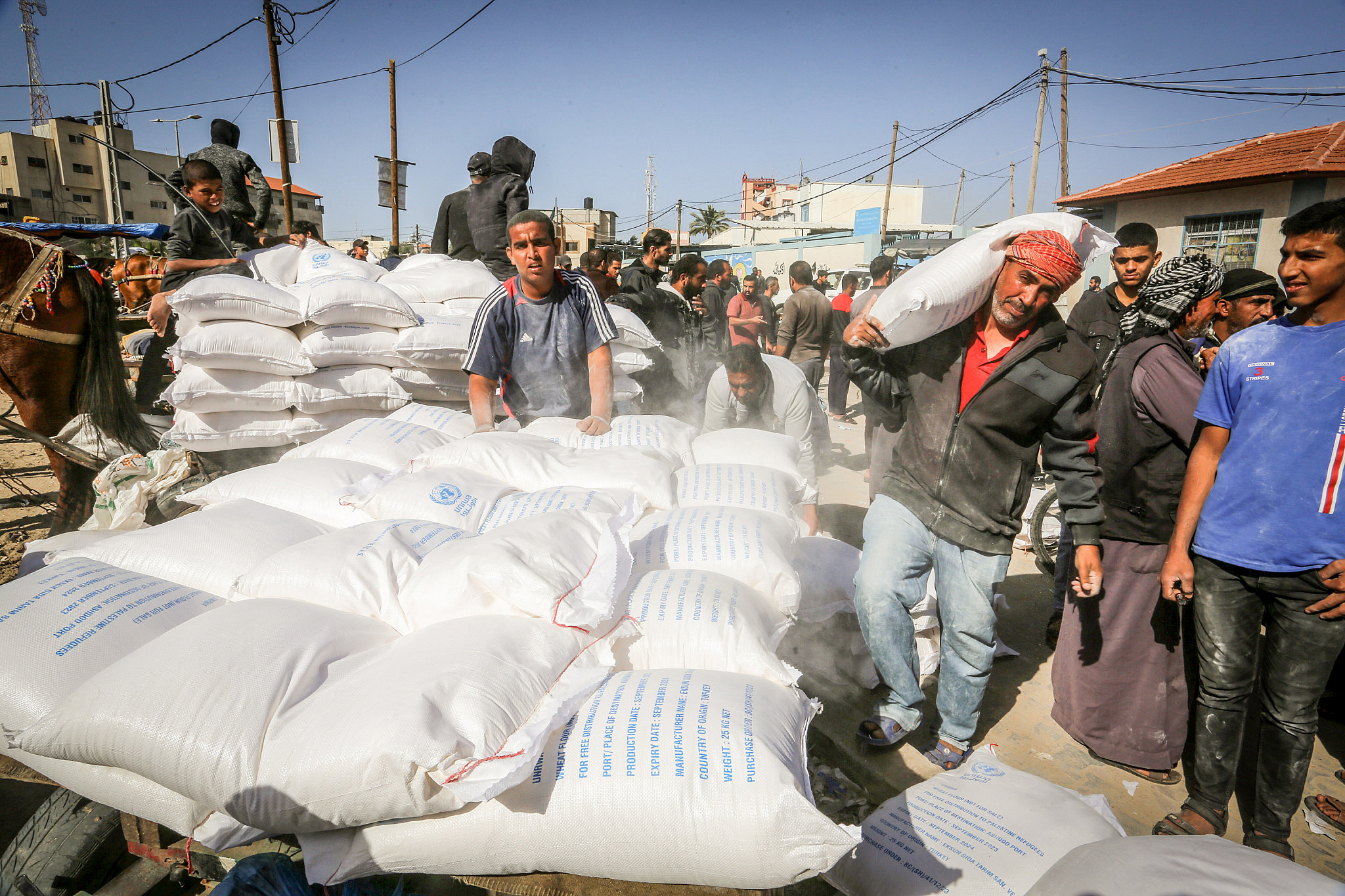
Plans for a maritime corridor notwithstanding, the humanitarian situation in Gaza continues to rapidly deteriorate. UNRWA announced this week that, on average, only 168 aid trucks had entered each day this month. On Mar. 11, UNRWA Commissioner-General Philippe Lazzarini said in a post on X that Israeli restrictions on so-called “dual-use” items have been tightening, with “lifesaving items” like anesthetics, ventilators, and cancer medications prohibited from entering. A Mar. 2 CNN investigation revealed that the Israeli military had barred entire trucks of essential aid if even one of those banned items was found onboard.
And with such impunity, why wouldn’t they? Israeli officials continue to insist that “there is no food shortage in Gaza,” even though the majority of Israelis want there to be one: a recent poll by Israel’s Channel 12 suggested that 72 percent of Israelis favored further withholding aid while Hamas and other groups were still holding hostages in Gaza. As if on cue, Israel’s finance minister, Bezalel Smotrich, instructed contractors at the Ashdod port not to deliver much-needed flour shipments to UNRWA, and a day later, the Knesset followed with a bill to bar the agency from operating on Israel’s “sovereign territory.”
‘Palestinians don’t want to live on aid’
It’s hard to imagine a tragedy more emblematic of the United States’ failed policy these past five months than the maritime corridor proposal. Israel’s prime minister, Benjamin Netanyahu, has repeatedly balked at half-hearted White House pleas that he rein in what Biden casually called the “over the top” slaughter of innocents. Protecting Palestinian children — over 13,000 of whom have perished so far — was evidently never high on the U.S. administration’s agenda; doing so would have meant canceling at least some of the more than 100 military sales Washington has approved since October 7. Guarding against starvation appears to be no less of an afterthought.
“Palestinians in Gaza suffered from food insecurity well before Oct. 7,” said Asi. “But the trauma this time is different. Palestinians know full well that whether they starve or not is a decision made at the whim of powers 100 percent out of their control.”
So why would a country intent on starving Gaza’s Palestinians suddenly reverse course when food aid arrives on ships, not trucks? To hear Israeli officials tell it, the maritime corridor is about garnering “international legitimacy” to continue the war on Gaza, which Israel continues to insist is about routing Hamas.
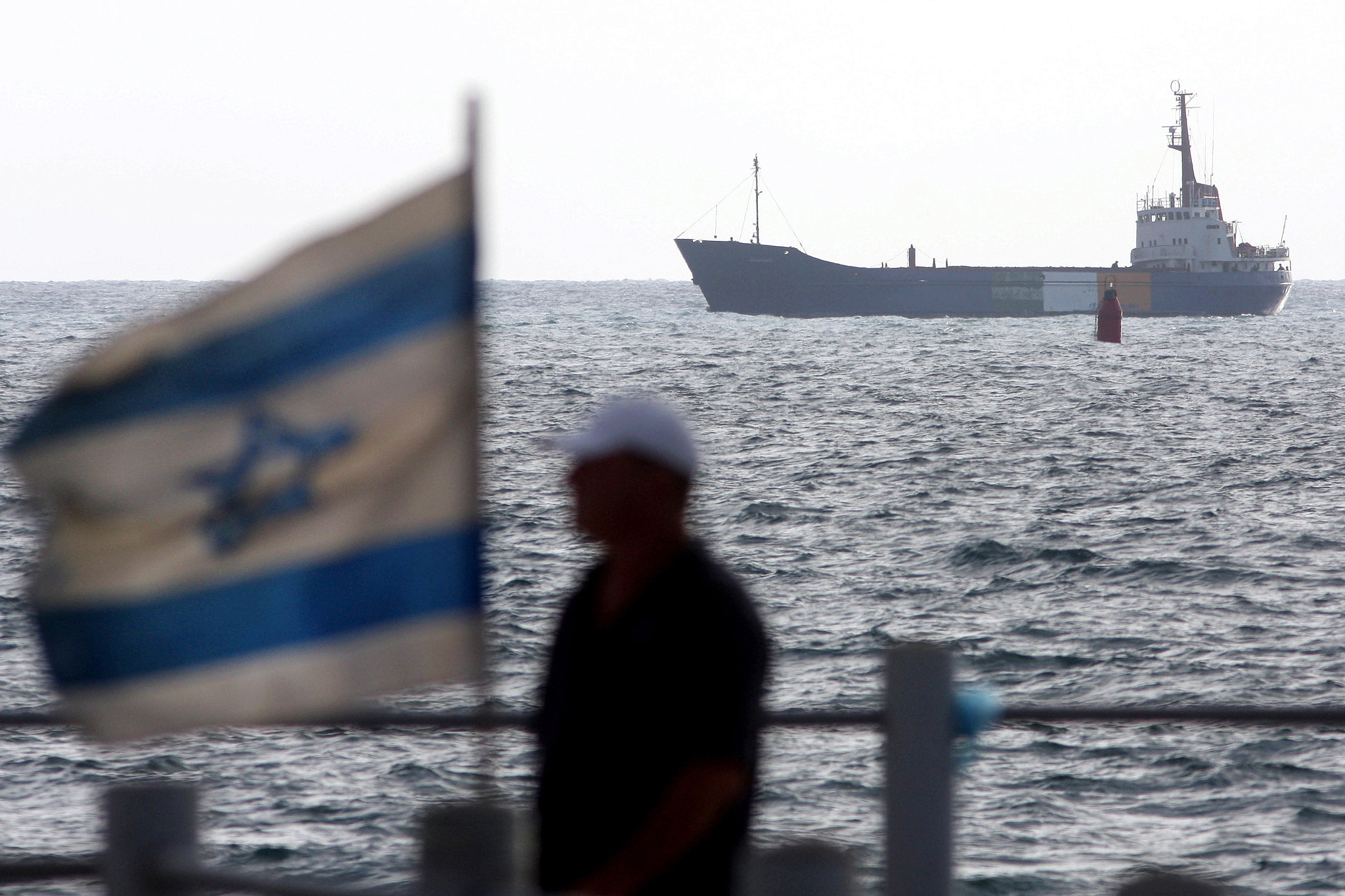
That might explain why Israeli authorities set up inspection facilities in the Cypriot port city of Larnaca, and Israeli military spokesperson Daniel Hagari announced a “flood of aid” into Gaza. But these talking points are meaningless while Israel continues to stymie access by land, especially to Gaza’s north.
“This maritime initiative in no way takes the obligations away from Israel as the occupying power to fully open up the land crossings and allow unhindered humanitarian access,” cautioned Gunness, noting that the International Court of Justice reaffirmed those binding duties in its Jan. 26 provisional measures. And none of this is going to be possible, he added, unless there is a “stable and credible ceasefire.”
Most read on +972
Even with a ceasefire, though, America’s much-touted sea corridor suffers from a structural problem, one rooted in Israel’s long-running siege of Gaza. Dov Weisglass, once a senior advisor to then-Prime Minister Ehud Olmert, infamously described the blockade as putting Palestinians “on a diet.” That the ensuing policies, which came complete with caloric calculations for each Palestinian individual, were put in place nearly two decades ago should be reason enough to doubt Israel’s intentions today.
“It makes no sense for humanitarian aid to be coordinated with the same entity that has publicly announced it intends to starve Palestinians in Gaza,” Arraf said. “And in the end, Palestinians don’t want to live on aid. They want, need, and deserve freedom.”


